
If you are considering duck hunting but don’t know where to start, we have some information to get you started. Since hunting has become more recreation than necessity, this may be a new sport for you. Even if you’ve hunted other animals before, there is an art to hunting ducks.
Here, we will tell you the basics of duck hunting, including types of ducks to hunt, duck hunting gear, and how to set up your decoys to help you fill your bag limit.

If you already know what you’re looking for, use our table of contents to get there faster.
Duck Hunting Basics
Duck hunting tends to be a social experience. It’s great to head out with some buddies and set up your decoys. With the plethora of species, there is no shortage of targets, if you know what you’re doing.
In total, there are 42 species of ducks and geese that are known to live in the United States. Below are just a few.
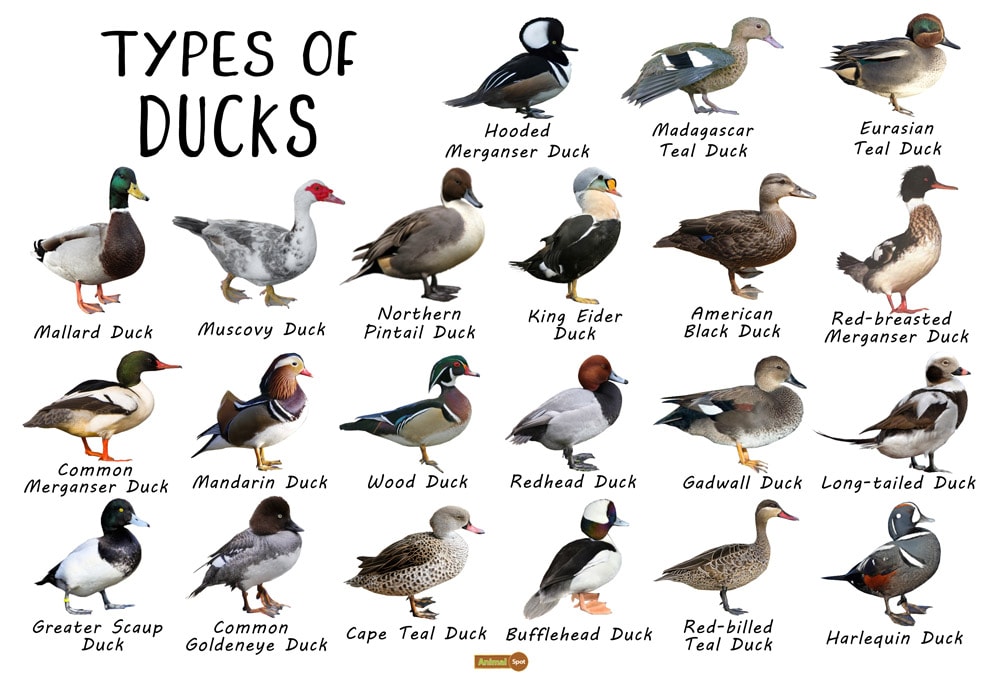
Types of Ducks to Hunt in the U.S.
Many types of ducks are common in the United States.
Mallard
Mallards are common in many parts of the country. Their adaptability to urban and rural environments means they can be found anywhere. Basically, if there’s water, you’re likely to find Mallards nearby. They are easy to identify by the iridescent green head on the male. Females sport a less colorful brown pattern.
Pintail
Pintails prefer large, open spaces and quickly become gun shy. This means waiting until other hunters call it a day to find the perfect pintail flock. These long-necked birds are identified by the male’s dark brown head with white stripes on either side, coupled with long, sleek wings. Often called the Greyhound of birds, these are skittish, fast-flying, and will require patience.
Canvasback
Canvasback ducks are one of the biggest diving ducks and are also one of the fastest, able to reach speeds of 70 MPH. They are also “the king” trophies of duck hunting, weighing in at up to 3.5 pounds. You can easily spot these king drakes who sport a red head, sloped bill, and black chest with white underbellies. The females, always less flashy are soft brown all over and are often mistaken for other types.

Black Duck
When hunting black ducks, you must be cunning and focused on your target. These birds frequent the Atlantic Northeastern Coast but less than 10 years ago, hunting was restricted due to low numbers. These ducks are very difficult to hunt and evade even seasoned hunters. They are found in shallow wetlands and appear very similar to Mallards, however, have darker brown flanks and olive-colored bills.
Wood Duck
Wood ducks are commonly found in the flyways, especially east of the Mississippi. They are one of the most beautiful waterfowl with their iridescent green and brown heads and gorgeous patterned wings. Even the females sport a white pattern around their eyes. These are found in wooded areas such as marshes and swamps.
Gadwall or Grey Duck
Gadwalls are unremarkable in their coloring and are easily mistaken for any other type of duck. Male Gadwalls are brown in color with a black patch near their tail. Females have an orange edge to their beaks. They respond well to calls and decoys, though, meaning you’re likely to encounter some during a duck hunt. These ducks prefer big, open water areas.
You can also hunt teal, bluebill, and Northern Shoveler in most parts of the country. Be sure to research which type is common and techniques for your chosen species before heading out on your hunt. However, keep in mind, you’ll likely encounter more than one type of duck on a hunt.
Top 9 States to Hunt Ducks
Where there’s a body of water, you’ll likely find ducks nearby. However, not all areas are created equal when duck hunting. Some states and areas are more suited to this type of hunting. Here are some places to check out for your next duck hunt.
North Dakota
With ample water sources and ample ducks of many kinds to go around, North Dakota will provide you with opportunities to hit your bag limit. There are also many private and public lands you can hunt on. Just be sure to get permission if hunting on private land. Plan on hunting mallards, pintails, gadwalls, green-winged teal, and lesser scaup in this region.
California
When the weather gets cold, where do ducks migrate to? California is one place that sees many wintering waterfowl, making it a prime spot to bring home some birds. You’ll be sure to find pintails, mallards, wigeon, green-winged teal on your hunt.
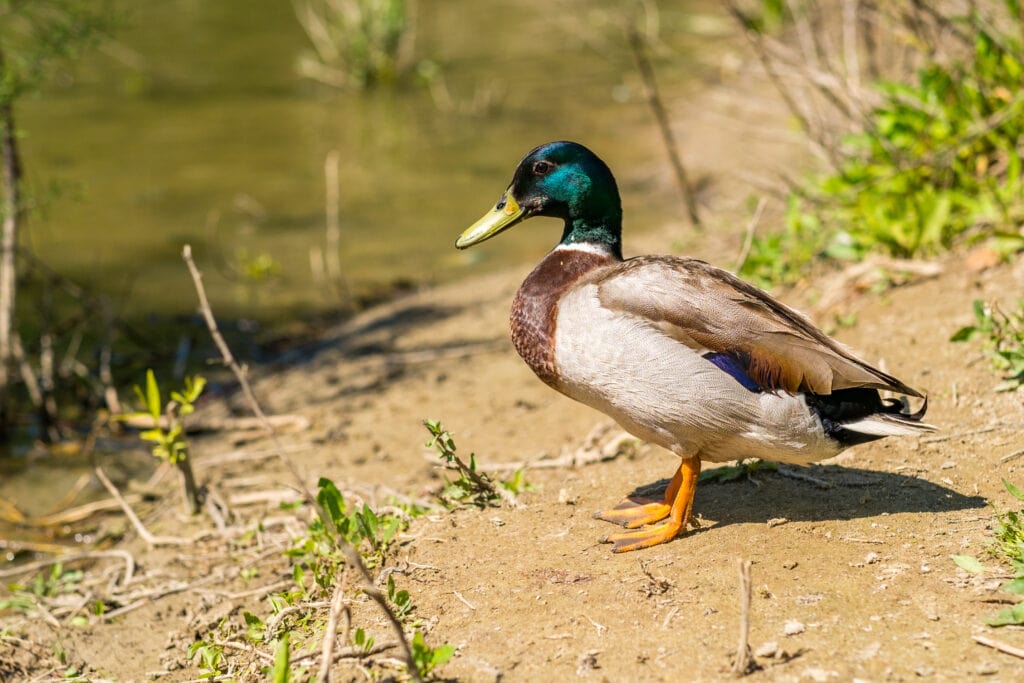
Louisiana
The Bayou state hosts nearly every type of duck you could be looking for. Their abundant wetlands provide a perfect habitat for ducks. You can find gadwalls, green-winged teal, blue-winged teal, pintails, mottled ducks in this region as the birds migrate or winter from colder climates.
Arkansas
Arkansas houses the Duck Capital of the World, Stuttgart, Arkansas. With plenty of food sources, birds flock to this state during the winter and provide plenty of opportunities for hunters. However, the competition is high and you’ll have to be smart to compete with other hunters. You’ll find green-winged teal, pintails, shovelers, wigeons, and of course, mallards, among many other waterfowl species frequenting this state.
Utah
The Great Salt Lake is a perfect place for ducks, drawing 3-4 million each year. Public hunting is allowed on the lake and is home to many hunting clubs as well with private access. There will be no shortage of birds to bag here. You can find pintails, mallards, wigeon, gadwalls, shovelers, green-winged and cinnamon teal in this area.
Mississippi
The best hunting you’ll find in the area is the upper Mississippi River. Ok, the upper Mississippi River isn’t actually a state but it does provide some great duck hunting. This area includes Minnesota, Wisconsin, and Iowa. Mississippi also has flyways, the Delta, and abundant farmland that draws more than its fair share of ducks. You can find lots of canvasbacks, redheads, lesser scaup, and mallards to hunt in the area.
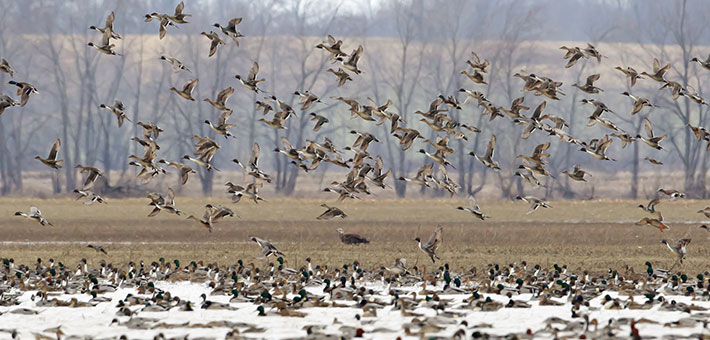
South Carolina
With the Ashepoo, Combahee, and Edisto rivers in the area, you can be sure waterfowl of all kinds can be found in South Carolina. The mix of freshwater and brackish marshes lends itself well to many species, such as green-winged teal, blue-winged teal, pintails, ring-necked ducks, wood ducks, gadwalls.
Maryland
It is no secret that Chesapeake Bay is home to the largest estuary and also to a plethora of bird species. There are also many other areas of the state where duck hunting is great. If you want to hunt on iconic waters, this is the place to find mallards, black ducks, green-winged teal, and canvasbacks.
Washington
Washington’s long duck hunting season gives ample time to hunt outside of the “usual” season. With public hunting lands and over a half-million birds, you are sure to find plenty to hunt. You can use a boat or walk in to hunt mallards, pintails, wigeon, green-winged teal, and long-tailed ducks.
Well, now you’re armed with plenty of places to go for your next duck hunt. Ducks frequent every region so you don’t have to travel far to find waterfowl to hunt.
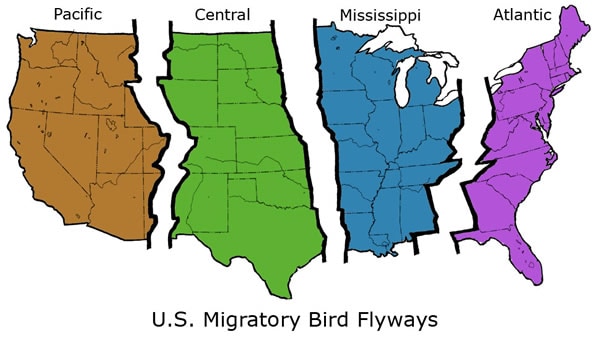
When to Hunt Ducks
The best time to hunt ducks is when there are plenty of them around and active. This centers around weather, season, and times of day.
Weather
Duck hunters know the best duck hunting comes in bad weather. Warm, sunny days are not a duck hunter’s friend. Storm fronts and winds drive ducks to protected areas and mask the movement and view of hunters and weapons.
In freezing weather, ducks seek out smaller patches of water where it hasn’t frozen over yet and feeding becomes more frequent due to the decreased availability of food. In snow and fog, ducks can’t see as well and are more susceptible to calling.
Time of Day
Typically, either mornings or evenings are touted as the best times to hunt ducks. In the morning, ducks are leaving their roosts and moving around. They are likely hungry and in search of food, which is a great time to be ready to take a shot near food sources.

Evenings are also popular because as the sun sets and the temperature cools, ducks begin to search for a good roost for the night. If you are set up in the right location, you’ll see plenty of activity.
Midday has also become a popular time for hunting. If you’re willing to battle the challenges of being in full sunlight and possible heat, you may see ducks wandering around in search of their next meal. This is also prime time for changing weather and cold fronts which prompt plenty of duck activity.
Get Your Gear Together
Before you rush out and buy everything with the word “duck” on it, consider what you’ll actually need. As a beginner, you can start with a small amount of equipment and gradually build up. Alternatively, you can pair up with another hunter or two and pool your resources. Things like boats and decoys can benefit more than one person at a time.
Whether you’re on a strict budget or are just wanting to start light, here are some things you shouldn’t head out without.
Must-Have Duck Hunting Gear
There are definitely some must-haves, some should-haves, and other things that fall into the optional category.
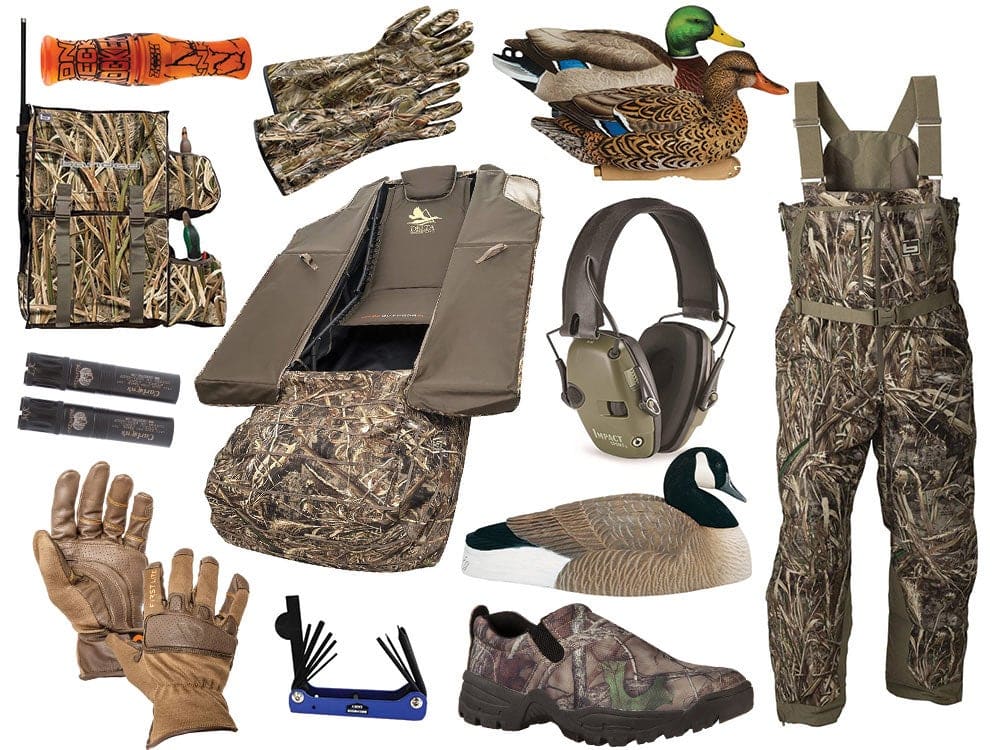
Waders
In case it hasn’t dawned on you, you’ll be spending quite a bit of time in and near water when duck hunting. You may even have to retrieve a kill from a body of water. Either way, you’ll need an excellent pair of waders to protect you while walking out into the water on a hunt.
Clothing Layers
As mentioned, duck hunting season is in the fall and winter and the best times to hunt come with storms. This means you should be dressing in layers of clothing to keep you protected from the elements. Duck hunting can take hours and you don’t want to give yourself away by shivering.
Decoys
If you want to draw ducks to your location, you’ll need a good decoy spread. This often involves more than one type of duck decoy and definitely more than a single sitting duck.
Duck Calls
Another helpful piece of equipment to draw ducks to you is a duck call. Or rather, duck calls. Every type of duck has a different call and while one duck call can attract the attention of other species, it is not a guarantee. However, if you are only going to have one, a mallard call is pretty universal since they are present in most areas.

Shotgun and Ammo
If you leave home without a weapon, you’ll have to be extra creative to bag any ducks. So, you definitely need a good shotgun and ammo to suit your purpose. Any semi-auto or pump-action shotgun will work perfectly. Then you’ll need some ammo to put in it. Specialized waterfowl shot is not necessary but be sure to adhere to Federal law by using non-lead ammo. Steel ammunition is a good option.
Blind Bag
There are many small items you’ll need to bring along on a hunting trip such as your hunting license, duck hunting tags, a knife, extra ammunition, and who knows what else. The best way to keep these clean, dry, organized, and accessible is with a blind bag. These are small enough to sling over your shoulder and carry onto a boat or into the water.
A few other supplies to consider are a head covering of some sort, good neoprene gloves, a light like a headlamp or flashlight for working in dimly lit conditions, a blind or way to remain unseen, and something to carry your ducks in. This can be a game bag or game strap.
Duck Hunting Regulations
No matter which state you hunt in, there are regulations on hunting seasons, limits, and times hunting is allowed. Be sure to go to the DNR site for the state you will be hunting in to be sure you adhere to these rules and regulations.
You will be required to obtain a hunting license, daily bag limit, possession limits, and permission to hunt (if on private land). Be sure to carry these things on you at all times while hunting.
Preparing For the Hunt
Ok, the basics are covered. Now that you have an idea of what you need for duck hunting, how do you actually employ the methods? If you are a beginner, you may not know the first thing about using calls or decoys to get started.
How To Use Decoys
Using decoys allows you to set up virtually anywhere and choose your hiding spot. Depending on how many decoys you have, your setup will differ. Around a dozen decoys are recommended. This gives you plenty of wiggle room to use a full spread or reduce the spread when necessary. For smaller puddles, a half dozen will suffice.
Determine your location. Use an inviting area of water that ducks would frequent anyway. Be sure to provide plenty of space for ducks to land and consider the preferences of your chosen species. Diving ducks will behave differently than puddle ducks so know your target.

Ducks prefer to land and take off into the wind, so be sure to note the direction of the wind. Set up your decoys in a natural formation such as a “V”, “U”, or “J”-shape. Each decoy will need a weight to anchor it to a spot. You should use 50 percent more line than the expected water depth to allow for the natural movement of the decoy.
Once set up, hunker down into your hiding spot and watch for the magic to happen. If you aren’t getting any activity reevaluate your position and shape of your spread.
How To Use Calls
Calling seems simple, right? Well, there’s actually a technique to create a realistic sound. If you blow into a call, it tends to sound like a kazoo. Not the most enticing sound. However, by forcing air from your diaphragm, coupled with grunting or humming, you will produce a duck-like sound.
There are many helpful videos on how to use a duck call like the one below. Be sure to practice long before you head out to hunt. Trying to get it right in the field is likely to scare ducks away from your location.
Duck Hunting Tips
There are many dos and don’ts to duck hunting. Inexperienced duck hunters tend to make mistakes that cause them to come in empty-handed. Here are some tips to help you start your hunt off on the right foot.
Common Duck Hunting Mistakes
Be cautious of these common errors when hunting.
Ineffective Concealment
Keep in mind that ducks will approach from the air. You may be concealed on all sides but if you are visible from above, ducks are unlikely to approach your spread, no matter how well-placed. Your blind should also be located away from your decoys. Even well-concealed blinds are visible and ducks catch onto hunters pretty quickly. Try to blend into the existing landscape, such as hiding in a shadow or within a contour or edge to make yourself invisible.
Giving Yourself Away
Moving, talking, or fidgeting in your blind alerts all manner of wildlife to your presence. Minimize your movement as much as possible while waiting for your targets to appear. This can be challenging especially when in a blind or concealment spot with hunting companions.

Battling Your Buddies
If hunting with friends, be sure you use courtesies and don’t try to hit the same targets. You’ll end up getting in each other’s way and causing tension between both you and the ducks. When hunting together, determine signals to help you anticipate each other’s moves. And be sure to call your shot so you all can be successful.
Bad Shot Timing/Position
Shooting too early or too late is a common mistake. Waiting for the perfect position or shot often results in a missed opportunity while taking the first shot can be just as fruitless.
Not having sufficient footing or space to take your shots will also end up with no haul to take home. Whether you are in a boat, swamp, water, or on the ground, be sure to have good footholds and position to take the shot.
Not Enough Scouting
If you haven’t done your research into what type of birds frequent the area, their habits, and then taken the time to scout the area, you are doing yourself a disservice. This will cause you to set up in the wrong place, which means you may not have any ducks come your way. Don’t set yourself up for failure- scout your area.
Tips For a Successful Hunt
Now that you know some things NOT to do, here are some ways to maximize your hunting experience.
Know Your Birds
Your bag limit will indicate the species of ducks you are allowed to hunt and how many you are allowed to bag. Some types are protected and can land you in a heap of trouble if one ends up in your bag when the warden comes by. This means you’ll have to know how to differentiate one species from another. Some ducks are easily distinguishable while others look alike with subtle differences.
Consider the Wind
Many hunters choose to have the back to the wind and decoys in front, but this generally puts the hunter’s position directly in the bird’s path. This also means after the first shot, ducks will take off in the downwind direction, making it difficult to make follow-up shots.
Don’t Leave Too Early
If it’s a good migration day, don’t pack up too soon. Staying into the late morning or even into the midday may give you additional opportunities.
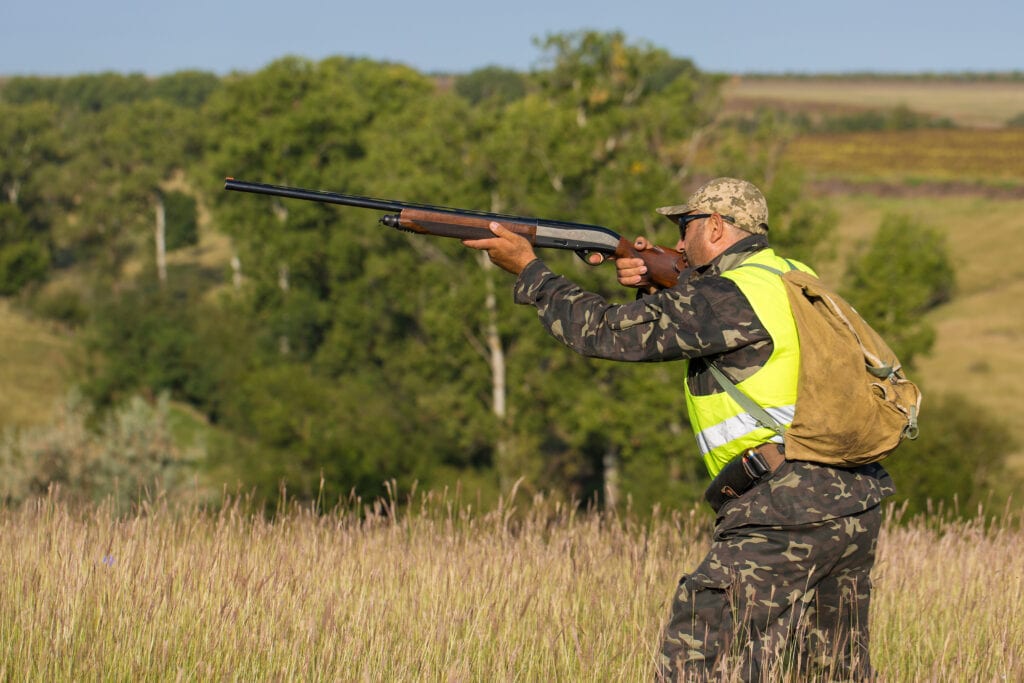
Know Your Distance
Be sure you know how far you can shoot accurately and take into consideration both the height and horizontal distance of the bird. Some shooters don’t estimate distance well and shoot outside their maximum range.
Know When To Call
Knowing how to call is helpful but if you call at the wrong time, you’re not likely to have success. Calls should be used minimally as ducks approach to bring them a bit closer. The other time to call is when ducks appear to be leaving the area. This will draw one back and once one heads your way, others are likely to follow.
Conclusion
There are many techniques and tips for duck hunting. You need to try several and see what works for you. Not all advice is one-size-fits-all. However, the one constant is that you always need to be adaptable and looking to improve your hunt and make it more successful.
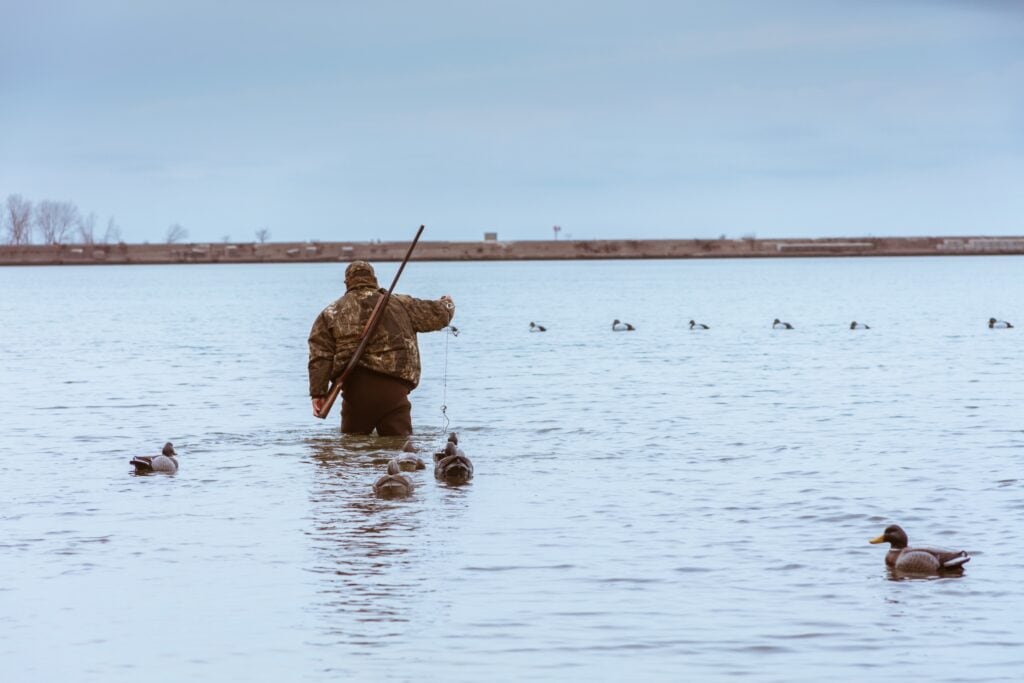
From proper duck blind setups and ways to stop losing ducks to how to clean and cook ducks, we’ve got you covered here at Big Game Logic. So feel free to browse the site and shoot us an email if there’s a topic you’d like to see us cover. Thanks for reading!

Big Game Logic is a participant in the Amazon Services LLC Associates Program, an affiliate advertising program designed to provide a means for us to earn fees by linking to Amazon.com and affiliated sites. Pages on this site may include affiliate links to Amazon and its affiliate sites on which the owner of this website will make a referral commission
